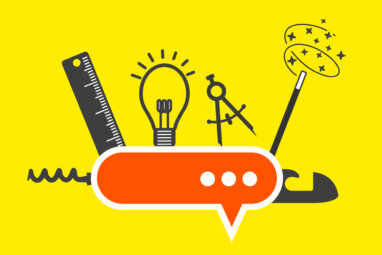The Long Journey to Understanding Intangible Assets

Topics
Column
Imagine that you are 30 years old and looking forward to a working life that could last well into your late 70s. You’ll be working at a time of extraordinary technological change. You’ll engage in jobs that might not yet exist.
Of course, earning money, saving money, and spending that money wisely will be important to you. Money gives you options and creates choices. It makes sense that much of the relationship you have with your employer is mediated by what you are paid to work. Bonus schemes, performance management practices, and performance rankings are all created to define basic salary and differentiate between high and low performers.
Money is a tangible asset. It comes in categories like salary and bonus that we understand, it’s easy to build, count and transfer, and its worth is readily acknowledged. We know when we are building, simply maintaining, or actually depleting our tangible assets.
But what if money wasn’t going to be the most important asset to you? What if the axiom “I work — to earn money — to buy stuff — that makes me happy” is a gross oversimplification of the life you want to lead?
What other assets developed at work could really count? How can we think about these less tangible assets?
This is a question I have been trying to answer for the last decade. I figured that understanding the opportunities and complexities of “intangible assets” could help people decide how best to build their intangible assets. And it would help corporations get a better handle on alternate ways of motivating and sustaining employees. Understanding the notion of intangible assets would help people think more concretely about how they allocate their time and energy. And if it were possible to measure investment in intangible assets at the level of the corporation, this would provide valuable information to prospective employees, managers, and investors that went beyond salary and the elaborate financial measures currently used.
What Kinds of Intangible Assets Should We Look At?
Here’s where I have gotten with this question.
The first challenge is naming and categorizing what intangible assets could be.
To approach this first challenge, my colleague Andrew Scott and I came up with three broad types of intangible assets (IA):
- Productive Assets. These include your capacity to continue to learn important skills; to build strong relationships with peers who can support your learning; and to build a reputation that others can use to verify your development.
- Vitality Assets. These include your capacity and motivation to stay healthy; to create strong, positive, and resilient relationships with others; and to positively manage the stress of work and home life.
- Transformational Assets. These include your capacity to understand yourself and be curious, and to create sufficiently diverse networks of friends and colleagues so that it is always possible to imagine other ways of living.
How Can We Measure Intangible Assets?
The second challenge is measuring these intangible assets.
I began the quest of understanding how this could be done by designing a simple self-report survey that people could use to measure their own intangible assets (IAs). Essentially, we would find out how people already were thinking about quantifying these assets. We posted the survey on www.100yearlife.com, and more than 10,000 people from around the world completed it. People told us whether they were actively building their IAs, simply maintaining them, or depleting them.
Analyzing that data gave us insights into differential individual investment. Across gender, for instance, there were no significant differences. By age, we saw variances: Older people believed they were more able to actively build vitality by managing stress at work; younger people believed they were more able to actively build their reputation.
I then developed a more elaborate survey and engaged executives from over 30 companies in my Future of Work Consortium. Here I considered both employees’ perceptions of their own IAs and their perception of the corporate practices and processes that enabled them to build their assets or created barriers from doing so. We now have data from around 1,500 employees and can begin to see that each company has its own unique pattern of investment in IAs.
How Can We Verify the Presence and Value of Intangible Assets?
The data we have about perception, however, does not address the third challenge, which is the issue of verification.
One of the reasons money has been so central in our thinking about value is that it is easily measured. It can be compared across individuals, groups, and corporations. The task would be to create a verifiable measure of IAs.
A measure would need to be consistent and reliable to allow all stakeholders to compare IAs across companies. My vision was that it would provide more information for prospective employees and shareholders about the full range of asset investment.
I thought machine learning could be the answer. Over a period of time, I worked with colleagues at the machine-learning group at Craft to see whether we could scrape verifiable data from large numbers of corporations. We found that we could for some data — we were able to measure work stress through policies on paternal and maternal leave and corporate spend on employee training — but not for other types of data, such as on the diversity of employee networks.
So where does all this leave us on the long journey to understand intangible assets?
We can now name them — and that’s useful to individuals as they think about how they manage their own lives and consider alternative perspectives to the accumulation of money as the sole measure of their work.
We can now measure them at the level of the organization — and that brings insights to a company about how they are building, or indeed depleting, the intangible assets of their employees.
But what we cannot do (yet) is verify the measurement of intangible assets. That will take more time and more focus. It took many decades to come up with a verifiable measure of the finances of a company. I wonder if this journey will be as long?









